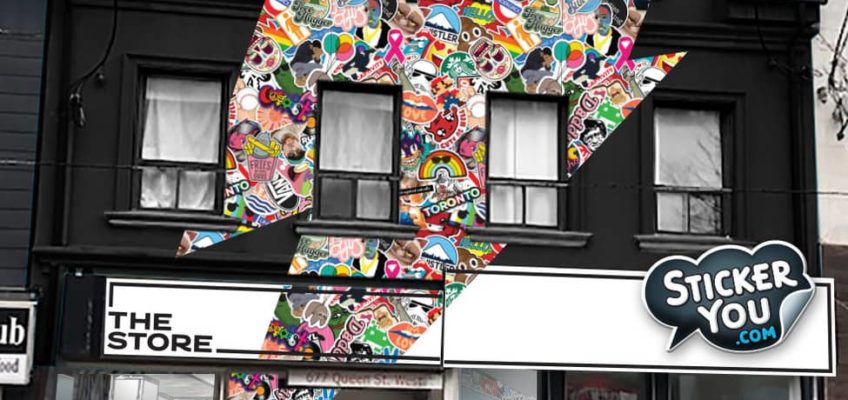There’s a lot of talk about omnichannel strategies, but what does that really mean, and how do you go about executing it in the right way?
Let’s start with a bit of jargon busting; in a nutshell, Ominchannel brings together the benefits of e-commerce and physical – what is known as “bricks and mortar” retailers.
Many start-ups and Small and Medium-sized enterprises (SMEs) would do well to incorporate omnichannel thinking in their own roadmaps Click To TweetAs with many such things this trend was set by Amazon (which started setting up locations to support and extend its online operations) and others (Warby Parker and Shopify to name but a couple) have quickly latched onto its obvious advantages. Now companies such as Wal-Mart are wisely viewing physical stores as places where customers can pick up and return merchandise, a combination of e-commerce and physical retail that makes the purchase experience more convenient than either an e-commerce or retail store alone.
Ominchannel brings together the benefits of e-commerce with bricks and mortar retailers Click To TweetBut those big names shouldn’t give the impression that this type of strategy only works on a large scale. Start-ups and Small and Medium-sized enterprises (SMEs) would do well to incorporate such thinking in their own roadmaps.
In an age where (not least because of the advent of immersive technologies and spatial computing) the physical and digital worlds are increasingly blending together, as are the shopping experiences that consumers expect. But while we wait for the world of Ready Player One, where haptic suits will routinely enhance Virtual Reality with physical sensations, humans will still get their tactile experiences in a “real world” shop.
In an age where (not least because of the advent of immersive technologies and spatial computing) the physical and digital worlds are increasingly blending together, as are the shopping experiences that consumers expect Click To TweetOne company leading this trend is StickerYou, which successfully sells custom stickers and decals online, and is now planning to open the world’s largest sticker store in Toronto later this month. Tech Trends talks to their Founder and President, Andrew Witkin, about why they have decided to take the omnichannel approach, and what other digital retailers should take into account before going down that road themselves.
The first step says Witkin, is to do a thorough audit of what your start-up’s goals are, what products you offer and whether or not these products or services are significantly enhanced by an in-person experience Click To Tweet“For example, at StickerYou, we offer customized, die-cut stickers, but there is a large gap between ordering stickers online and feeling the quality of a sticker, or being inspired by the creativity of sticker designs right in front of you, which is why we are opening a retail space in 2019,” he says. “When customers can experience these products in real time, it can help drive brand awareness in a way that e-commerce simply can’t. Having a brick and mortar location not only allows customers to experience your products in person, it also opens up a host of opportunities for savvy e-commerce retailers.”
These opportunities can range from hosting product and industry-focused workshops and events to gleaning in-person feedback from customers on products and services, a brick and mortar location, properly leveraged, can be a place for a brand to shine.
When evaluating this benefit, Witkin recommends that business owners look at the retail location as a channel that can push online sales rather than a store that is evaluated solely by traditional retail metrics.
“Your retail location works as both a store and an advertising space for your e-commerce business. As such, weigh the current per-click costs of online advertising against the potential costs of driving individualized shopping experiences through in-store brand interactions, drop-ins and walk-by traffic. If these types of interactions can be considered as impressions, then a physical retail space can break even or operate at a loss and still be ROI positive, as long as it succeeds in driving increases in online sales and overall lowered cost-per-click ad spend.”
“If your retail space breaks even, all marketing value generated by the store could be considered as free. As long as the KPIs of retail marketing campaigns are equal to or less than that of the current online strategies for your business, then the omnichannel strategy pans out for you.”
This alone will make the search experience a more memorable one, kind of like searching through records in a bin and discovering something new you didn’t know you were looking for.
They are getting ready to open a StickerYou store in the next few weeks in Toronto’s hippest quarter at 677-679 Queen Street West, Toronto, Canada, and they are planning to make a splash (this will be, according to the company, the world’s largest sticker store) with a 3-storey tall vinyl graphic in collaboration with applied sciences company 3M.

The store will be an experiential space, with stickerbombed walls, tangible product, a custom experience space where customers can see others’ designs and kiosks where they can create their own using StickerYou’s online StickerMaker. There will also be a Sticker Museum that details the history of stickers in the basement, and a sticker art exhibition is set to take place in the fall (the first of many), featuring works from sticker artists across the globe such as Shepard Fairey (think the iconic Obama “Hope” illustrations) and Matthew Hoffman (You Are Beautiful).
“Ecommerce retailers need to approach this from an entirely different perspective, and ask themselves what a physical store and buying experience adds to their brand that online channels don’t.”
The trend towards traditional retailers closing has also meant that commercial landlords have become more open to offers of short-term rent deals and pop-up concepts which carry lower risk for e-tailers to dabble in the omnichannel concept, according to Witkin.
“I would first evaluate if the business, merchandise or brand experience can be enhanced by a physical retail location. If the answer is yes, then I would start with a pop-up and test the waters.”
“The ROI on the retail investment can be viewed against the physical store’s sales as well as incremental online sales due to the additional brand awareness that the physical store generates.”
Witkin sees the trend gaining momentum creating a new online/brick and mortar hybrid which is unlike either traditional retailers or online-only stores, but something better than the sum of its parts.
Many online retailers may only open one store, or a handful of stores Click To Tweet“I believe more online retailers will get into physical retail,” he writes. “However, I don’t believe the scale of stores will be the same as that of traditional retail chains. Perhaps an online retailer will have a few stores in a city, but I don’t believe many online retailers will go past that. Many online retailers may only open up just one store, or a handful of stores.”
Witkin also sees a paradoxical trend in the opposite direction to some degree with brick-and-mortar stores investing in their online presence. For some time, they focused on omnichannel pick up locations which gave them a good footing. However, he says these traditional brick-and-mortar retailers need to improve the merchandise experience in store so there’s more reason to engage products and not just pick things up from their physical locations.
The StickerYou store will open in mid-August at 677-679 Queen Street West, Toronto, Canada

Alice Bonasio is a VR and Digital Transformation Consultant and Tech Trends’ Editor in Chief. She also regularly writes for Fast Company, Ars Technica, Quartz, Wired and others. Connect with her on LinkedIn and follow @alicebonasio on Twitter.









